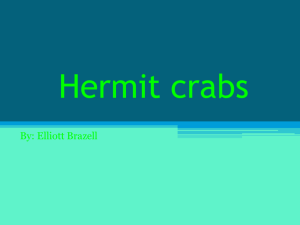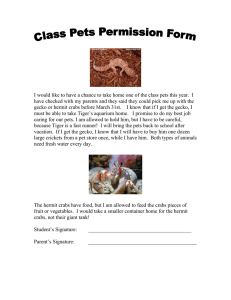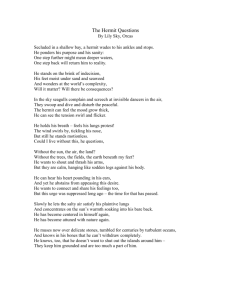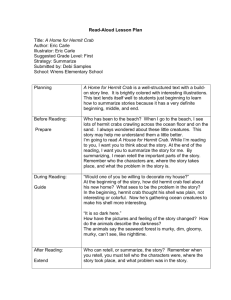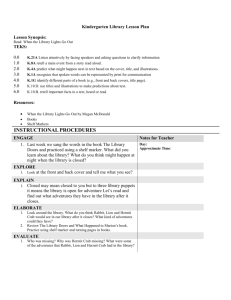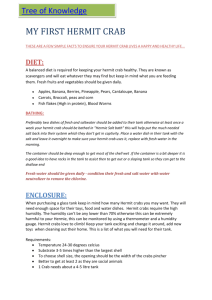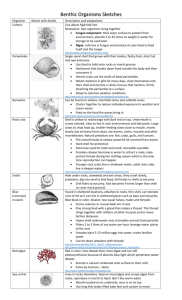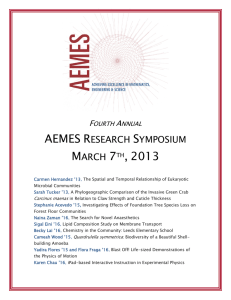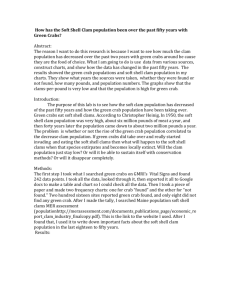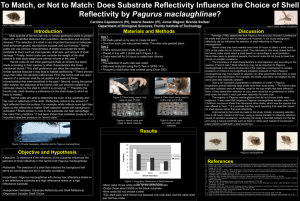SUPPLEMENT 1 – Further details of the methods Predator cue and
advertisement
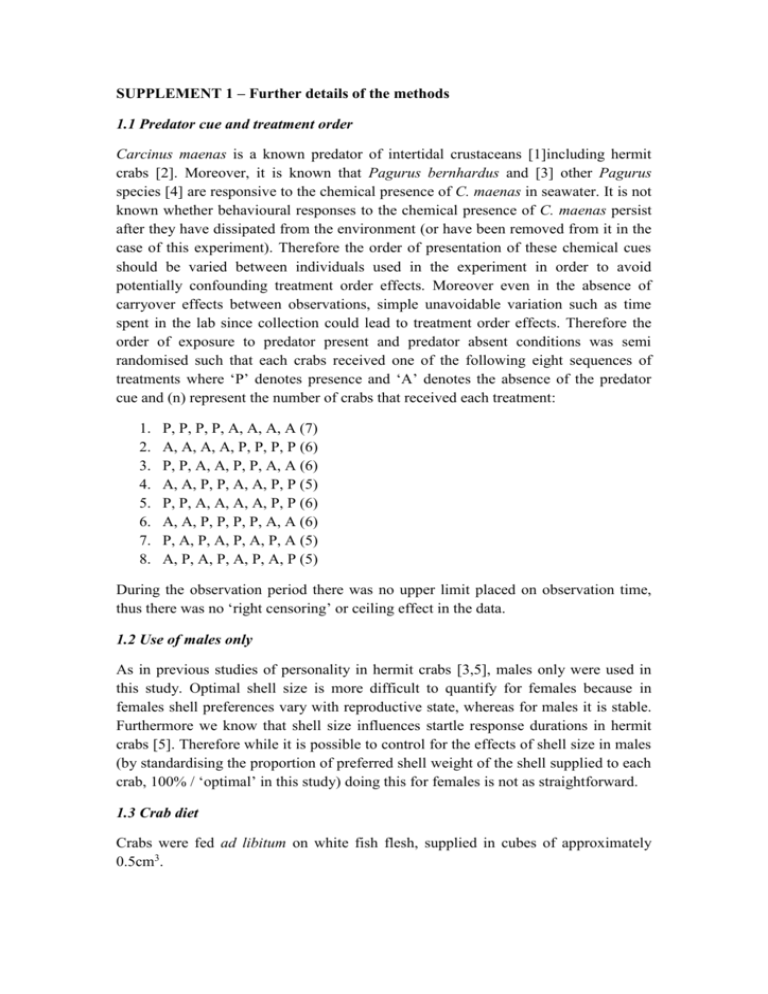
SUPPLEMENT 1 – Further details of the methods 1.1 Predator cue and treatment order Carcinus maenas is a known predator of intertidal crustaceans [1]including hermit crabs [2]. Moreover, it is known that Pagurus bernhardus and [3] other Pagurus species [4] are responsive to the chemical presence of C. maenas in seawater. It is not known whether behavioural responses to the chemical presence of C. maenas persist after they have dissipated from the environment (or have been removed from it in the case of this experiment). Therefore the order of presentation of these chemical cues should be varied between individuals used in the experiment in order to avoid potentially confounding treatment order effects. Moreover even in the absence of carryover effects between observations, simple unavoidable variation such as time spent in the lab since collection could lead to treatment order effects. Therefore the order of exposure to predator present and predator absent conditions was semi randomised such that each crabs received one of the following eight sequences of treatments where ‘P’ denotes presence and ‘A’ denotes the absence of the predator cue and (n) represent the number of crabs that received each treatment: 1. 2. 3. 4. 5. 6. 7. 8. P, P, P, P, A, A, A, A (7) A, A, A, A, P, P, P, P (6) P, P, A, A, P, P, A, A (6) A, A, P, P, A, A, P, P (5) P, P, A, A, A, A, P, P (6) A, A, P, P, P, P, A, A (6) P, A, P, A, P, A, P, A (5) A, P, A, P, A, P, A, P (5) During the observation period there was no upper limit placed on observation time, thus there was no ‘right censoring’ or ceiling effect in the data. 1.2 Use of males only As in previous studies of personality in hermit crabs [3,5], males only were used in this study. Optimal shell size is more difficult to quantify for females because in females shell preferences vary with reproductive state, whereas for males it is stable. Furthermore we know that shell size influences startle response durations in hermit crabs [5]. Therefore while it is possible to control for the effects of shell size in males (by standardising the proportion of preferred shell weight of the shell supplied to each crab, 100% / ‘optimal’ in this study) doing this for females is not as straightforward. 1.3 Crab diet Crabs were fed ad libitum on white fish flesh, supplied in cubes of approximately 0.5cm3. References 1. Fish, J.D. & Fish, S. A student’s guide to the seashore Third edition. Cambridge University Press, Cambridge, U.K. 2. Ropes J.W. (1968) The feeding habits of the green crab, Carcinus maenas (L.). Fish Bull 67, 183–203. 3. Briffa, M., Rundle, S.D. & Fryer, A. (2008). Comparing the strength of behavioural plasticity and consistency across situations: animal personalities in the hermit crab Pagurus bernhardus. Proc R Soc Lond B 275, 1305-1311. 4. Rotjan, R., Blum, J. & Lewis, S. (2004) Shell choice in Pagurus longicarpus hermit crabs: does predation threat influence shell selection behaviour? Behav Ecol Sociobiol 56,171–176. 5. Briffa, M. & Bibost, A.-L. (2009). Effects of shell size on behavioural consistency and flexibility in hermit crabs. Can J Zool 87, 597-603.
